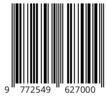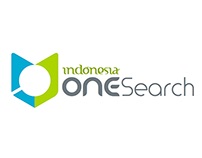Patu Mbojo: Sastra Lisan Bima dalam Kajian Stilistika
Abstract
This research discusses the language style in patu mbojo. Because the whole poem is the content (it does not have a cover like pantun in general), patu becomes a medium of communication that is quite dense in meaning in the process of achievement. The data in this study consisted of eight parts chanted by two speakers, male and female. The purpose of this study is to find and identify the number of language styles used in the whole poem. The qualitative method is considered appropriate for this research and applies the method of listening and recording with descriptive analysis. The study used in this research is stylistic study. The language styles found in patu mbojo are divided into four, namely based on the selection of words, tone (the medium language style in patu mbojo aims to create a happy and peaceful atmosphere, so the tone contains humor or something fun), sentences (climax, anticlimax, parallelism, and repetition; anaphora and mesodiplosis), and directness of meaning (rhetorical; alliteration, assonance, apophasis or preterition, pleonasm, silepsis, hyperbole, and paradox and figurative language styles; simile, antonomasia, sarcasm, and pun or paranomation). Overall, the language style used is a conversational language style that is rich in various kinds of allusions to beautify and sharpen the meaning in the overall content of the poem.
Keywords
Full Text:
PDFReferences
Alam, I., Syahbuddin, H. ., & Qodri, M. S. . (2022). Nilai-nilai Pendidikan Karakter dalam Patu Mbojo (Pantun Bima). Jurnal Ilmiah Profesi Pendidikan, 7(4), 2217–2221. https://doi.org/10.29303/jipp.v7i4.925
Badrun, A. (2014). Patu Mbojo: Struktur, Konsep Pertunjukkan, Proses Penciptaan, dan Fungsi. Penerbit Lengge.
Chaer, A. (2009). Pengantar Semantik Bahasa Indonesia. Rineka Cipta.
Danandjaja, J. (1997). Folklor Indonesia: Ilmu Gosip, Dongeng, dan lain lain. PT Pustaka Utama Grifiti.
Faruk. (2015). Metode Penelitian Sastra Sebuah Penjelajahan Awal. Pustaka Pelajar.
Firdaus. (2019). Kajian Nilai Moral terhadap Syair Kerajaan Bima. Universitas Muhammadiyah Mataram.
Alwi. H, Dardjowidjojo. S, Lapoliwa. H, A. M. M. (2010). Tata Bahasa Baku Bahasa Indonesia. Balai Pustaka.
Hasnun, D. H. A. (2018). Mengenal Sastra Lisan Daerah Bima. Bildung.
Chambert-Loir, Henri. S. M. R. S. (2012). Bo’ Sangaji Kai Catatan Kerajaan Bima. Yayasan Pustaka Obor Indonesia.
Indrastuti, N. S. K. (2023). Sastra Lisan: Eksistensi, Fungsi, dan Revitalisasi. Gadjah Mada University Press.
Jonker, J. C. G. (2004). Mpama Mbojo. Yayasan Lengge.
Keraf, G. (2009). Diksi dan Gaya Bahasa. Gramedia Pustaka Utama.
Mahsun. (2014). Metode Penelitian Bahasa. Raja Grafindo Persada.
Asmarini, D. N.P (1998). Sastra Lisan Donggo. Pusat Pembinaan dan Pengembangan Bahasa Departemen Pendidikan dan Kebudayaan.
Nurgiyantoro, B. (2018). Stilistika. Gadjah Mada University Press.
Pradopo, R. D. (2020). Stilistika. Gadjah Mada University Press.
Putri, R. M. (2019a). Stereotipe Perempuan dalam Sastra Lisan Bima (Dae la minga, La Hila, dan La Bibano): Kajian Feminisme. Unviersitas Gadjah Mada.
Putri, R. M. (2019b). Stereotipe Perempuan dalam Sastra Lisan Bima (Dae La Minga, La Hila, dan La Bibano): Kajian Feminisme. Universitas Gadjah Mada.
Putri, R. M. (2024). Unsur Lokalitas dalam Penguatan Bahasa Indonesia. In L. Hakim (Ed.), Bahasa Indonesia di Era Digital: Tantangan dan Masa Depannya (pp. 77–88). Intelektual Manifes Media.
Rahmahwati, N. Z. ., Hindun, H., Yundiani, S. ., & Putri, Z. A. (2024). Gaya Bahasa dan Pemilihan Kata pada Podcast Rintik Sedu Episode "Kita Yang Terlupa": Language Style and Word Choice in the Rintik Sedu Podcast Episode“ Kita Yang Terlupa”. Transformatika: Jurnal Bahasa, Sastra, Dan Pengajarannya, 9(1), 209–222. https://doi.org/10.31002/transformatika.v9i1.1723
Ratna, N. K. (2017). Antropologi Sastra: Peranan Unsur-Unsur Kebudayaan dalam Proses Kreatif. Pustaka Pelajar.
Rahmawati, S., Syamsinas, S., Asyhar, M., & Sudika, N. . (2021). Kapatu Bima Acceptance: Stylistic Study. Kopula: Jurnal Bahasa, Sastra, Dan Pendidikan, 3(2), 58–64. https://doi.org/10.29303/kopula.v3i2.270
Siddik, A. (1980). Tutur Jenaka dari Bima. Departemen Pendidikan dan Kebudayaan.
Taum, Y. Y. (2011). Studi Sastra Lisan: Sejarah, Teori, Metode dan Penerapannya Disertai Contoh Penerapannya. Lamalera.
Tawalinuddin, H, D. (1997). Kerajaan Tradisional Di Indonesia: Bima. Pusat Pembinaan dan Pengembangan Bahasa Departemen Pendidikan dan Kebudayaan.
Utami, R. M. P. & W. S. (2024). Eksplanasi Nggusu Waru: Manifestasi Budaya dan Kearifan Lokal Etnis Mbojo oleh N Marewo melalui Karya Sastra. Hortatori, 8(2), 192–201. https://doi.org/10.30998/jh.v8i2.3169
Utami, W. S. (2023). Kemampuan Bahasa Inggris Siswa Sekolah Menengah Di Indonesia Sebuah Kajian Psikolinguistik Pemrolehan Bahasa Kedua. MANTRA: Jurnal Sastra Indonesia (Sastra, Bahasa, Budaya), 1(1), 9-19. Diambil dari https://jurnal.uts.ac.id/index.php/mantra/article/view/2753
Zaim, M. (2014). Metode Penelitian Bahasa: Pendektan Struktural. Sukabina Press.
DOI: https://doi.org/10.31002/transformatika.v9i2.9630
DOI (PDF): https://doi.org/10.31002/transformatika.v9i2.9630.g3583
Refbacks
- There are currently no refbacks.
Copyright (c) 2025 Rahmin Meilani Putri

This work is licensed under a Creative Commons Attribution-ShareAlike 4.0 International License.


_(2)_.png)
.png)
_.png)
.png)
.png)















